A lovely oatmeal molasses bread, with added oats and whole wheat flour for extra goodness. Makes great toast and sandwiches!
Winter here means not only soup season, but hearty bread season. This Oatmeal Molasses fits that bill perfectly! This lovely molasses bread also has added oats and whole wheat flour, for extra goodness. This bread is delicious eaten out of hand with butter, toasts beautifully and makes great sandwich bread, too!
This two-loaf recipe is also great for doing one weekly bake, keeping one out and freezing the second loaf for later in the week. An extra loaf also makes a great and welcomed gift for family, friend or neighbour :)
Ingredients and Substitutions
Oats – Large-flake, old-fashioned rolled oats are recommended here. In a pinch, you could probably use quick-cooking oats. Instant oats are less idea.
Molasses – For best results, use “Fancy” molasses, rather than Cooking or Blackstrap molasses, which has a much stronger and harsher flavour. If you only have Cooking molasses on hand, you could try using half molasses/half honey, to temper the molasses a bit.
All-purpose flour and whole wheat flour – This recipe uses a combination of all purpose flour, together with some whole wheat flour. I have only tested this recipe with the specified ratio of all purpose to whole wheat flour, so it is recommended that you keep to these amounts for best results. If you don’t have whole wheat flour on hand, you can replace with more all-purpose flour. You may need to use additional flour over-all with this substitution.
Yeast – you’ll want to use regular Active Dry or Instant Yeast, such as SAF Brand for this bread. Quick or rapid-rise yeast is not recommended, as this is a two-rise recipe.
You will also need – Eggs (2), salt, white sugar, butter (can use vegetable oil instead in same quantities).
Step-by-Step Photos
This is a summary of the steps to make this bread. Always refer to the Recipe Card below for complete ingredients and instructions.
Start the dough by soaking the rolled oats. Be sure the mixture is cooled sufficiently before proceeding. If it’s too hot, it could kill the yeast. Add the rest of the dough ingredients, but holding back 1 cup of the all purpose flour.
Add as much of the last cup of all purpose flour as needed, to bring the dough together. Note that this is quite a moist dough. It’s about ready when it wraps the hook and cleans the bowl a bit (but not completely.). Remove to a floured work surface and knead 1 minute, adding a bit more flour if it is sticking to your hands or the counter. Place in a greased bowl, cover and let rise until doubled, about 60-75 minutes.
Divide dough into 2 equal pieces (I like to weigh them, so they are the exact same size). Roll into a rectangle, then roll up jelly-roll style from the short side. Pinch seam together and place into greased loaf pans. Cover and let rise until doubled and cresting the pan by about 1 inch in the centre of the pan. Brush top with egg wash and sprinkle with more rolled oats right before baking.
Recipe Tips
- Bread recipes often list the flour amounts as “approximate”, since the exact amount you will need varies from kitchen to kitchen. You may need less or more flour than specified and that’s perfectly normal. For that reason, I always hold back about 1 cup of the flour and add the last part in small increments and only as needed to bring the dough to the desired texture. You don’t need to use it all and likewise, if you need more, add more.
- It is also worth reminding that dough rising time will vary from kitchen to kitchen. I like to include a rough estimate of rising time, just so people understand the approximate time involved, but you should always trust what you see and not the clock. It’s done rising when it’s doubled, however long that takes. Check regularly on the rising progress, to avoid over-proofing, in the event it is rising faster in your kitchen than it did in mine.
- If you are a new or novice bread baker, you may wish to take a read of my Getting Started with Yeast Bread Baking resource page.
- An instant-read thermometer is invaluable for bread baking. Often a loaf will look done, when it isn’t ready at all. Loaves like this one, with rolled oats, hold a lot of moisture, so the loaf will brown on the outside, but the inside will be still moist and under-cooked. Testing with a thermometer takes the guess work away. Inserting it in the centre of the loaf to test will tell you exactly when your loaf is ready. Typically, you want a loaf at least 190F. With moist loaves like this one, I want to see at least 200F and up to 210F.
Storing and Freezing
Store bread in an airtight container at room temperature for 2-3 days or freeze up to 2-3 months.
Want to save this recipe?
Enter your email and I'll send it to your inbox. Plus, you'll get great new recipes from me every week!
By submitting this form, you consent to receive emails from Seasons and Suppers.
You can unsubscribe at any time.
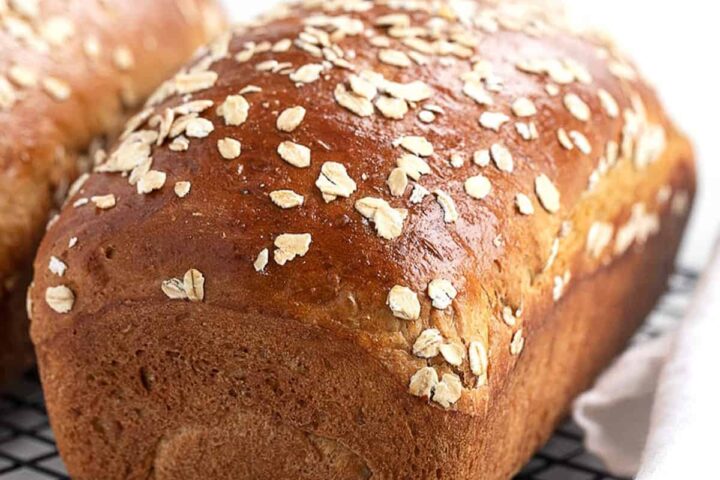
Get the Recipe: Oatmeal Molasses Bread
Ingredients
- 1 1/4 cups boiling water
- 3/4 cups large-flake rolled oats
- 1/3 cup Fancy molasses, *see Note 1
- 2 Tablespoon butter, at room temperature or vegetable oil, in same quantity
- 1 large egg, lightly beaten
- 1 teaspoon granulated white sugar
- 1/2 cup lukewarm water, about 105F
- 1 Tablespoon active dry or Instant yeast, not rapid or quick-rising
- 1 cup whole wheat flour
- 1 3/4 teaspoon fine salt
- 3 cups all purpose flour, approximately
Topping before baking:
- 1 large egg, beaten
- 2 Tablespoons large-flake rolled oats
Instructions
- In a large bowl or the bowl of a stand mixer, add the oats and boiling water. Stir and let stand 15 minutes.
- Meanwhile, combine the white sugar, lukewarm water and yeast in a small bowl. Stir to combine and let stand 10 minutes.
- Once oats have soaked, add the molasses, butter and egg to the bowl and stir to combine with a spoon or kneading hook on a mixer. Add the yeast mixture, whole wheat flour, salt and 1 1/2 cups of the all purpose flour.
- Use a spoon or kneading hook to mix in thoroughly. Continue by adding the last cup of flour, in small increments, adding only as much as needed to create a moist dough that wraps the kneading hook and cleans the bowl in spots. You may not need all of the last cup or you may need a bit more that 1 cup. Dough will be quite moist.
- Remove dough to a floured work surface and knead 1 minutes, adding additional flour if dough is sticking to hands or work surface. Form into a ball, place in a greased bowl, cover with plastic wrap and let rise until doubled in size, approximately 60-75 minutes.
- Remove dough to a floured work surface. Press to deflate, then divide into 2 equal pieces.
- Take one piece of the dough and roll into a 8 x 11-inch rectangle. Starting from the short side, roll the dough up jelly-roll style and pinch the seams to seal.
- Place into a greased 8 x 4-inch loaf pan. Repeat with the other piece of dough. **If you only have 9x5-inch loaf pans, you can use them here. Roll your dough into a slightly larger 9x12-inch rectangle, so it will fill the larger pan. Your resulting loaf will be wider and shorter and the cooking time may change, so watch closely.
- Cover the pans with greased plastic wrap or a clean tea towel and let rise until doubled, about 1 hour.
- Preheat oven to 375F (not fan-assisted), with rack in the centre of the oven.
- Once loaves are ready to bake, brush tops with beaten egg and sprinkle with additional rolled oats.
- Bake in preheated over for about 40 minutes, checking after about 25 minutes and covering the tops loosely with a sheet of aluminum foil if loaves are nicely browned already, to prevent over-browning. If you have an instant-read thermometer, baked loaves until the loaves read at least 200F when inserted into the centre of the loaf.
- Remove from oven and immediately remove loaves to a cooling rack to cool completely before slicing.
Notes
More Oatmeal Bread Recipes to Love!
Hi! I’m Jennifer, a home cook schooled by trial and error and almost 40 years of getting dinner on the table! I love to share my favourite recipes, both old and new, together with lots of tips and tricks to hopefully help make your home cooking enjoyable, stress free, rewarding and of course, delicious!


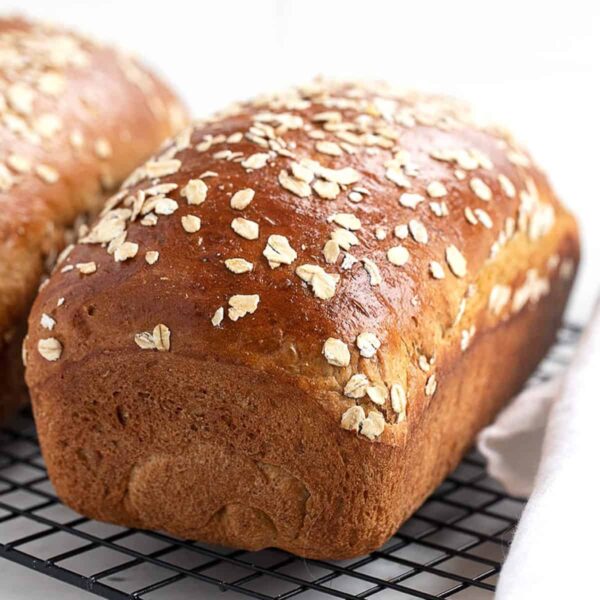
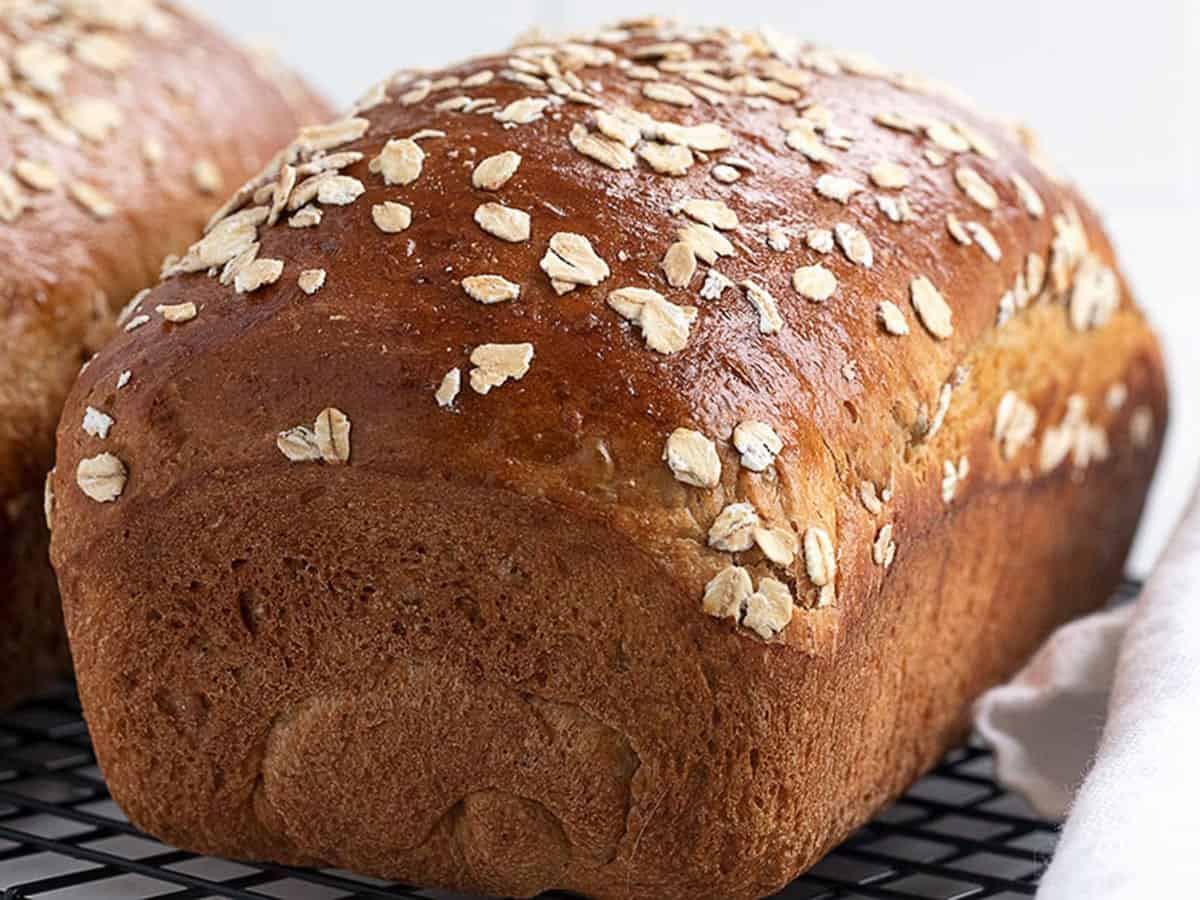
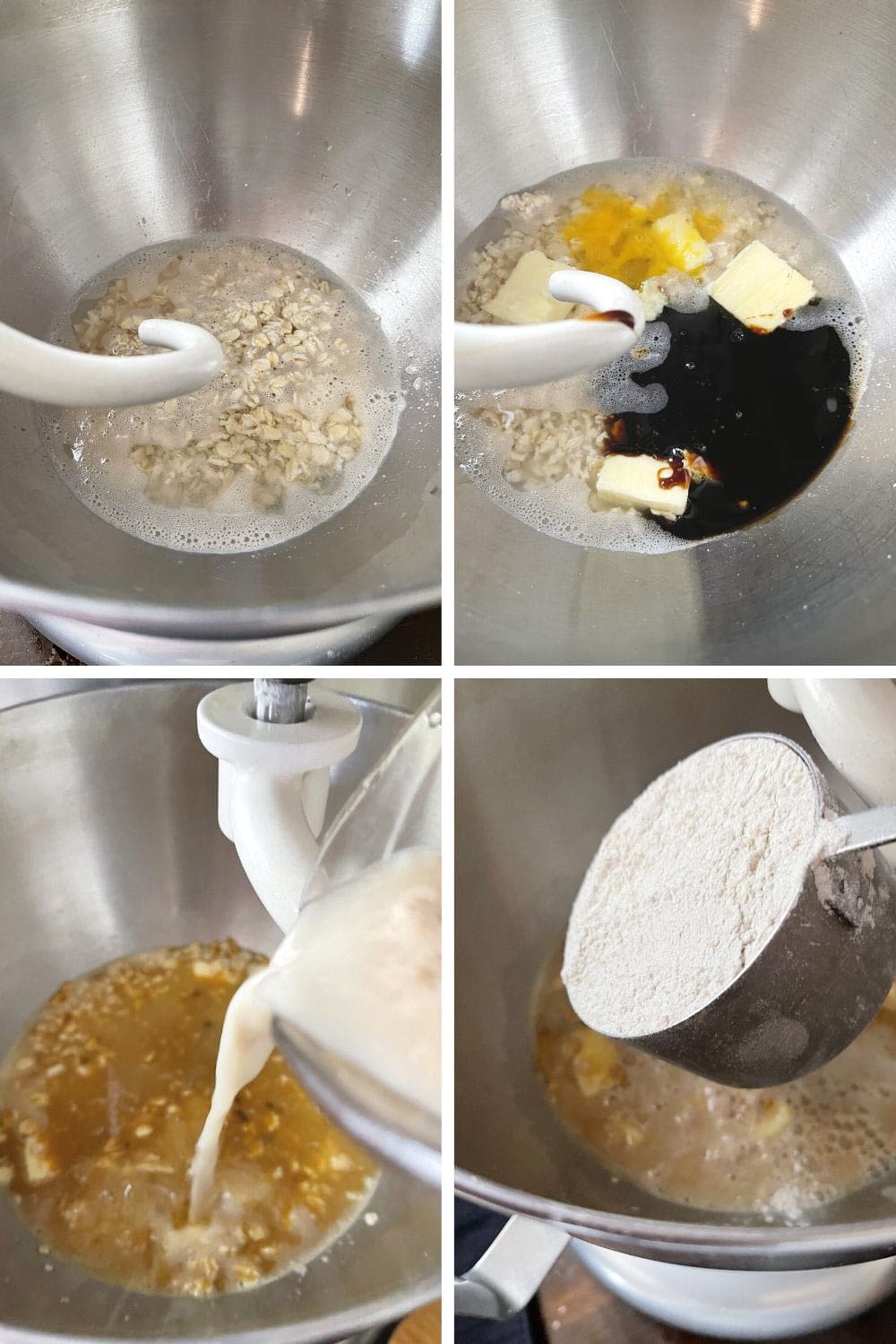
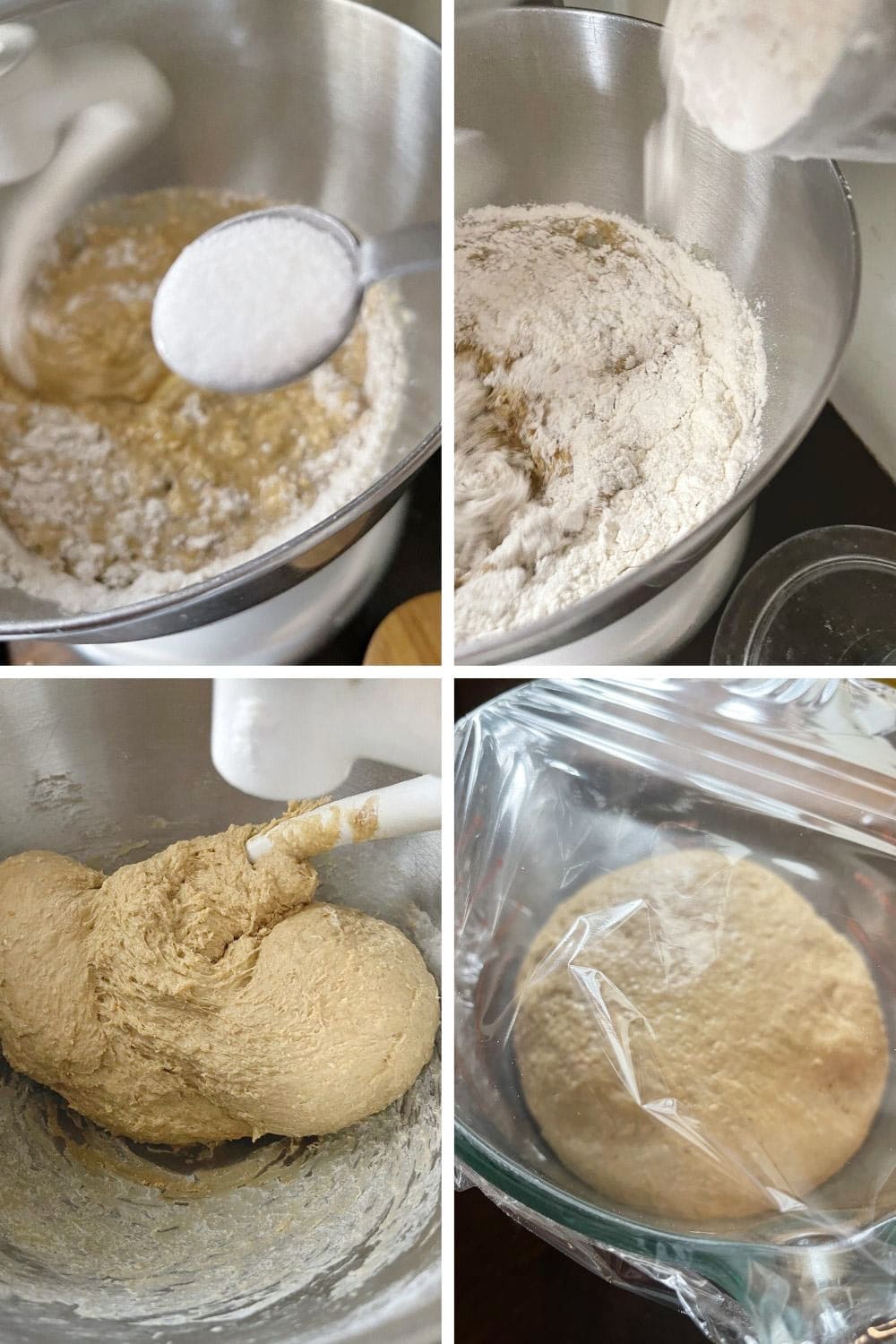
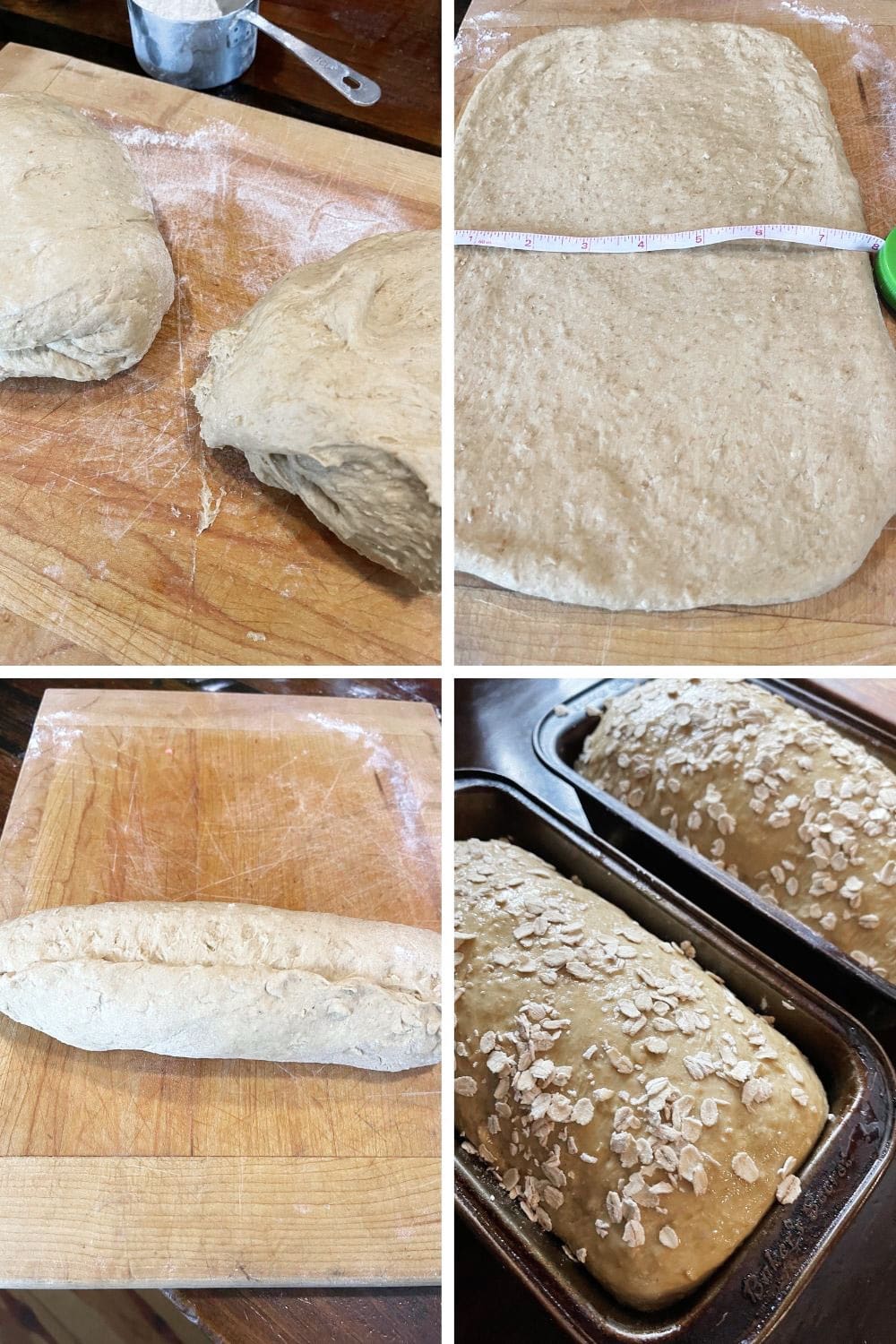
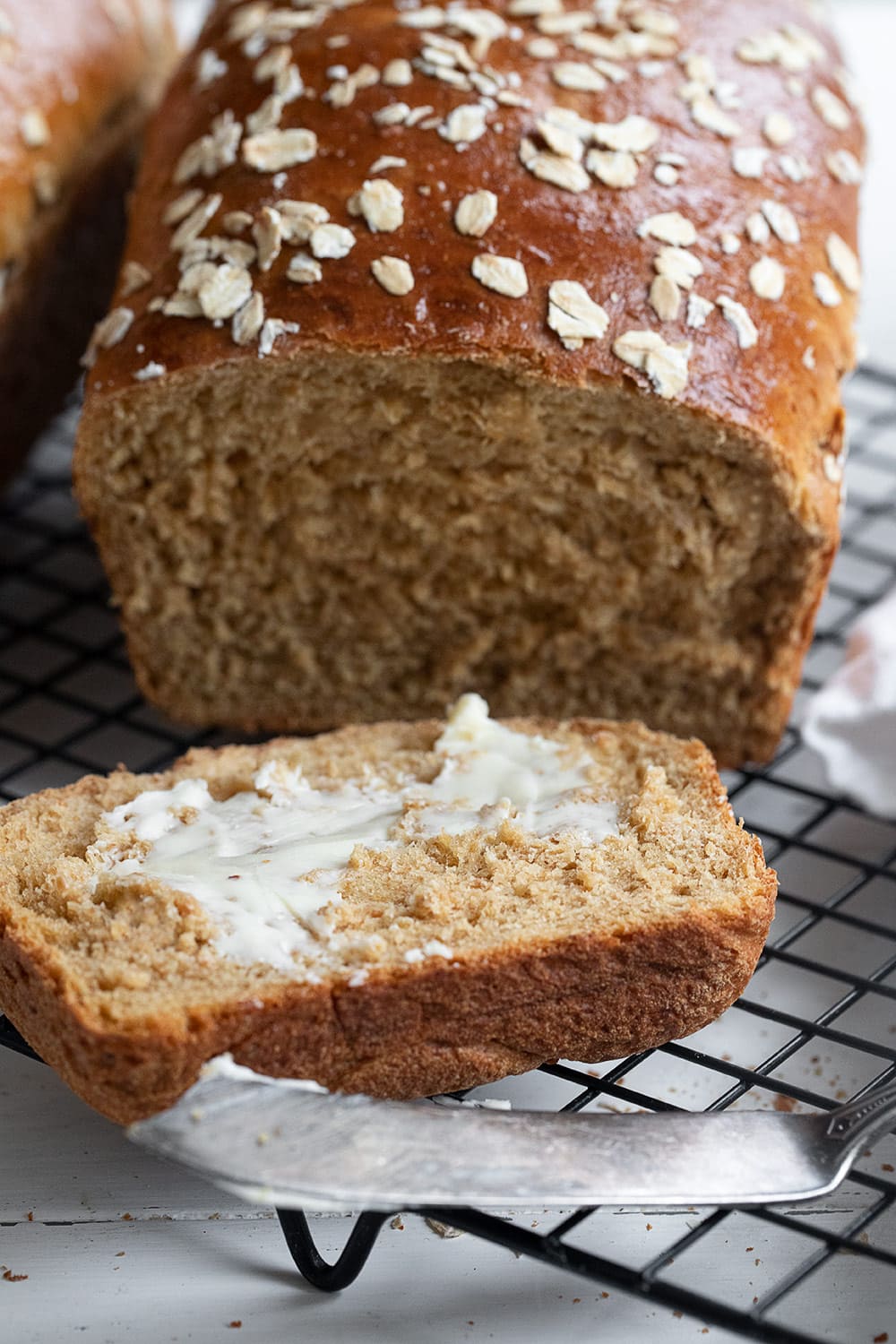
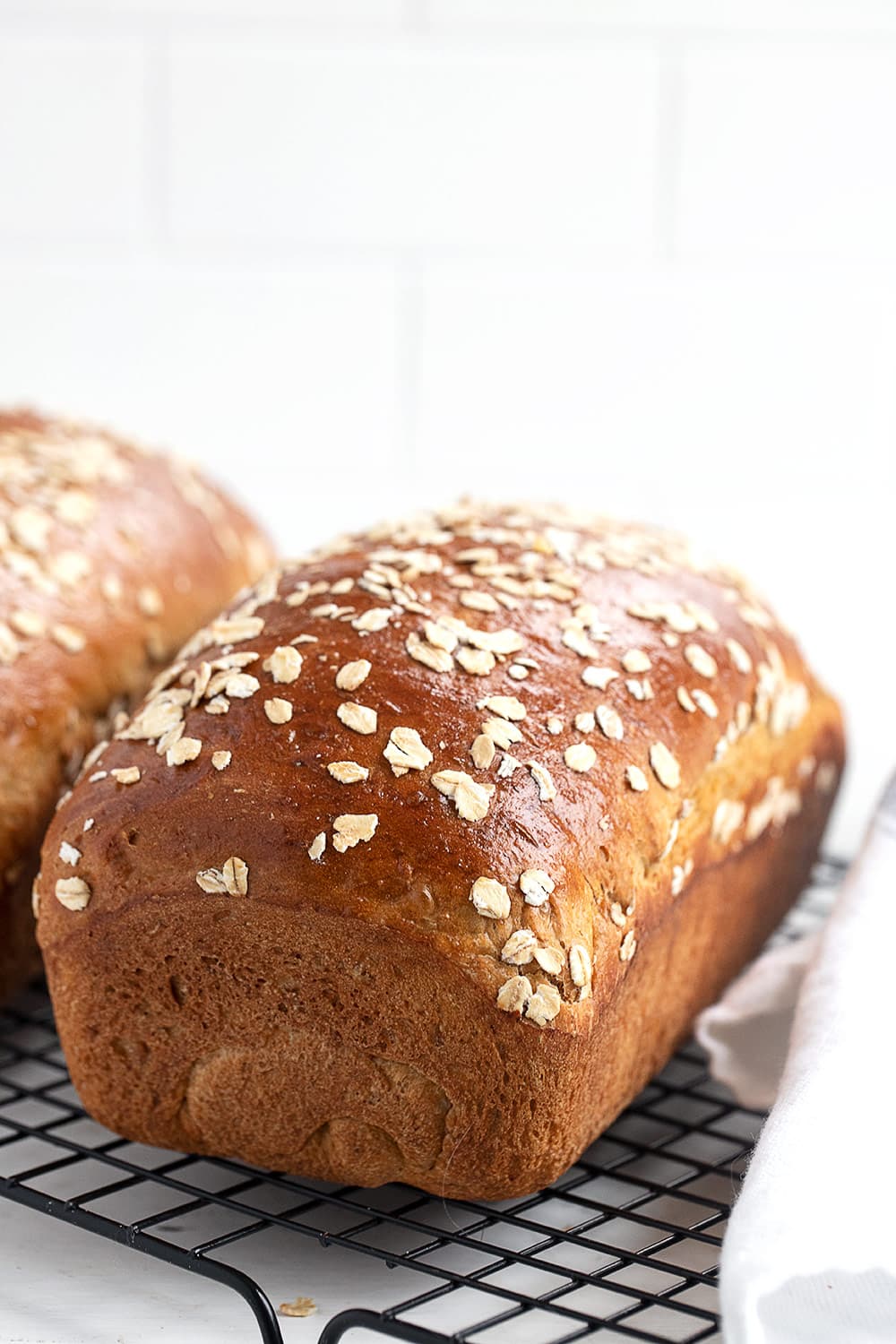
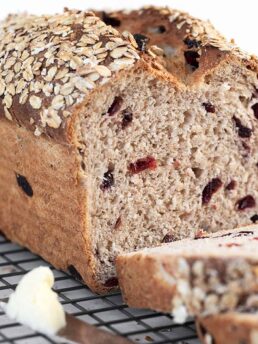
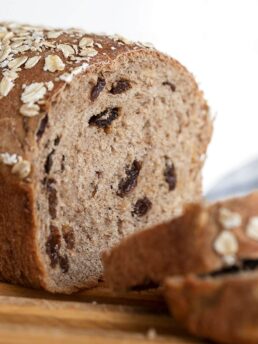


We grew up on this bread that my mom made way back in the woods and New Brunswick. I made it for years myself when I left home but now I’ve lost the recipe and my mom has passed away so I will try this one.
Enjoy, Carol!
I used the full amount of molasses and added multi grains into my dough. The bread turned out great!!
Sounds great, Riana. So glad you enjoyed it! Thanks :)
Jennifer:
I prefer to bake using metric but I’m not seeing the conversion. Am I missing it somewhere?
Thank you,
Dianne
Made this today and it was delicious! Mine looked just like your picture and it made my kitchen smell so good.
I’m so happy to hear, Lin :) Thanks so much!
This bread is delicious both plain and toasted. It’s similar to the Honey Oat Bread on this site, which is excellent as well. The molasses adds a bit more flavour. Both breads have a beautifully soft, moist crumb. I used 1 1/2 cups whole wheat flour and 2 1/4 cups A/P, added orange zest, and subbed 2 1/4 tsp instant yeast for the active dry yeast. The dough is slack and sticky when mixing by hand, but firms up with kneading. Instead of dividing the dough in half for 2 loaves, I made one loaf in an 8 x 4-inch pan and 2 sandwich buns. I haven’t been disappointed with any of the bread recipes on this site. The recipes are well written and easy to follow.
I’m so glad you enjoyed it, Sadie :) Thanks so much!
I’ve made this bread a few times and have found that it’s a great way to use up sourdough discard. I now substitute 1 cup of discard for 113 grams of the A/P flour and the 1/2 cup lukewarm water. The crumb is a bit airy, soft and moist, and there’s a slight tang to the flavour. Perfect for a sandwich or toasted.
Hi Jennifer,
I usually have had trouble making breads with oatmeal but yours turned out great. Love the molasses flavor. This is a keeper recipe.
So glad to hear, Diane :) Oatmeal breads can be tricky as they are a moist dough, but so happy this one worked well for you. Thanks!
Is original recipe one loaf or two?
Hi Richard, the default recipe makes two loaves. If you only want to make one, use the “1/2X” button in the Recipe Card, to automatically halve the recipe.
Would love to make this bread but with one exception, cannot tolerate egg. Could l make it without. Love to hear from you . Ruth
Hi Ruth and yes, you can simply omit the egg. you may need a bit less flour as a result and the resulting bread will be a little less enriched, but will work just fine.
Do you have to use whole wheat flour or could you use all purpose for it all?
Hi Isabelle, you could use all purpose flour for it all, if you like. You will probably need less of the all purpose than specified for the whole wheat, when substituting.
Delicious!! Thank you for the easy to follow directions! Having a girls getaway/reunion next month and I’m pre-making bread for us!! I had to make sure it was good! 😋✌️
Glad to hear, Angela :) Thanks so much!
This bread is amazing! It’s especially awesome with all the leftover Turkey we have. We’ve had loads of turkey salad sandwiches and turkey cranberry sandwiches and this bread is just perfect for them.
So glad to hear and perfect for those turkey sandwiches :) Thanks so much!
Made it yesterday. A great tasting bread and the kitchen was warm and smelled wonderful on a cold Ontario day. Nice for a change of flavour and texture. Was super toasted too. Thanks as always for the inspiration Jennifer.
So glad you enjoyed it, Sharron :) And yes, it’s a nice bread for these cold days, for sure! Thanks so much.
Can I use dough setting on my bread machine ?
Hi Lr, possibly. I have no experience with a bread machine, so I’ll just advise on general information. I would suggest soaking the oats in boiling water outside of the machine for the 20 minutes or so, then adding the soaked oats and other ingredients to the machine to process the dough. Hope that helps.
Jenifer I have never tried baking bread. This looks and reads like I want a slice now. I will give it a try Sunday. Fingers crossed on doing a good job.
Glad you are giving this a try, Pat. I’m around all day tomorrow (I’m around all day, every day, actually :). Email me if you run into any trouble or have questions.
What a lovely loaf! I love the flavor of molasses when folded into baked good – giving this bread a try!
Thanks Milena and me, too :) It’s a great Winter loaf.